(Last updated on 13/10/2025)
Conveniently situated on the A-66 road/E-803 road (Autovía Ruta de la Plata) running through Extremadura from north to south, Cáceres is great for a weekend city break from the Andalusian capital.
This article, aimed at travellers looking to get to Cáceres from Seville, includes all the transport options available, the advantages of each means of transport, a detailed car journey description, practical information and tips to help you plan your trip.
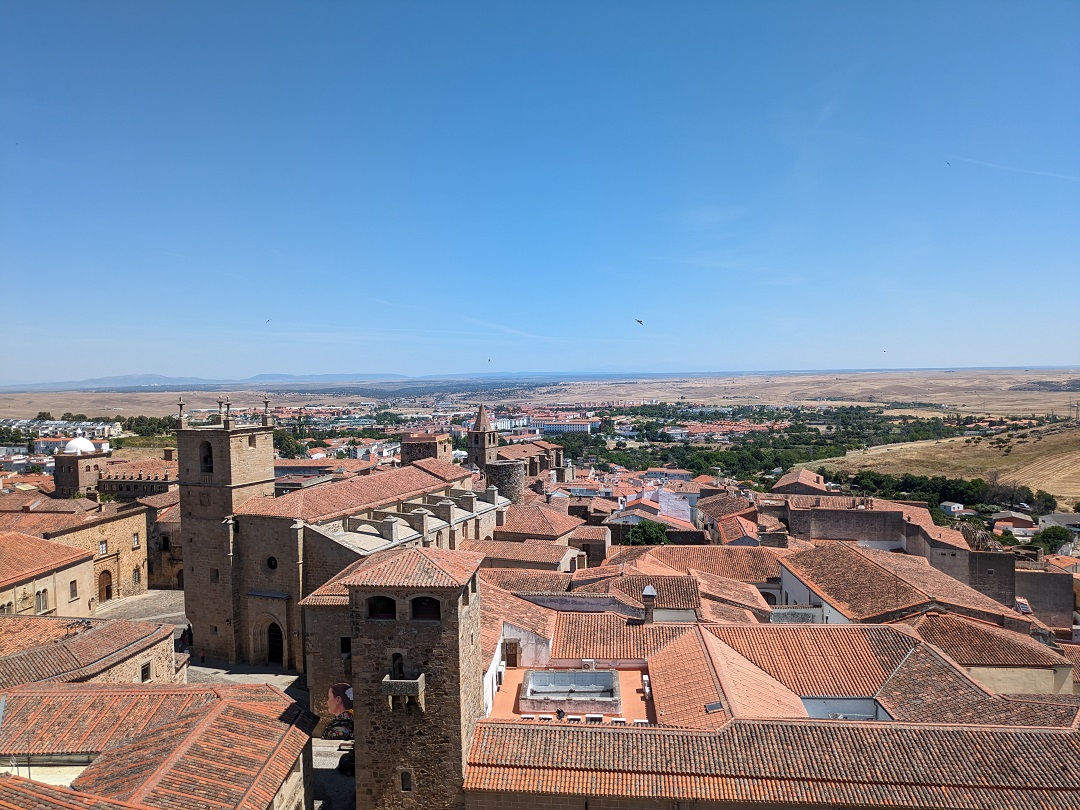
This post contains affiliate links. If you click through and make a purchase, it will generate a small commission for me, at no extra cost for you. Read the full disclosure for more details.
Cáceres is 267 kilometres away from Seville. A typical car journey takes 2h 37min, making it the fastest way (road traffic permitting) to get to Cáceres from Seville.
Reasons for driving to Cáceres from Seville:
You can hire a car at the airport. If you fly into Seville, hiring a car at the airport is a no-brainer. You avoid having to get into the city by public transport or taxi to get to the bus or the train station.
You can leave when you want. You don’t need to kill time while waiting for a coach or train. As soon as you land, you can go get your car and leave straight away.
It can be the cheapest option if travelling with others.
It’s the fastest option. Driving from Seville to Cáceres will be at least 38min quicker than the fastest coach and 2h 3min quicker than the train.
It gives you the most flexibility. Driving allows you to stop whenever and wherever you want. You might need regular quick rest stops, or you may want to take it slowly and visit other places on the way, such as Zafra or Mérida.
It may be your only option. If you want or need to leave Seville late in the evening, hiring a car may be your only option to get to Cáceres, since the last coaches and trains usually depart before 6pm.
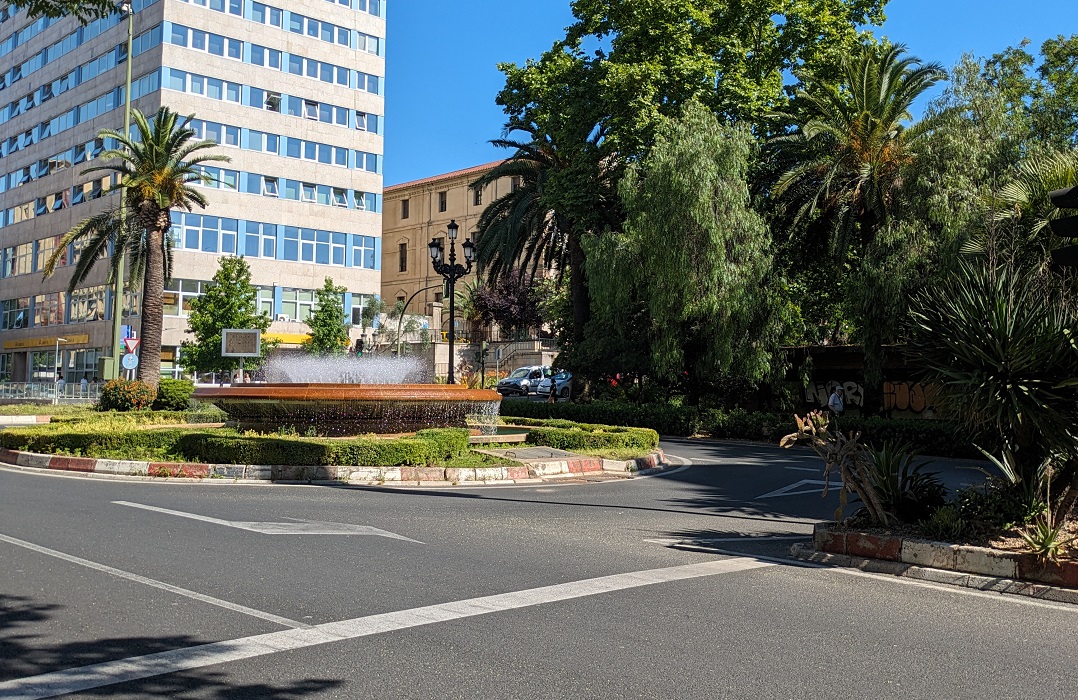
The car journey to Cáceres from Seville
If you’re setting off from Seville Airport, the journey involves crossing the northern part of Seville from east to west and across the river Guadalquivir to then join the A-66/E-803 road up to Cáceres.
Traffic is fast-paced on the A-4 road out of the airport. It’s good to have someone else in the passenger seat help with directions and making sure you don’t miss your exit, particularly if you’re driving at night. Follow the signs for Mérida (often appearing in the same sign as SE-20 I. de la Cartuja) onto the SE-20 road, which merges onto the SE-30 just before the river. After crossing the river, get off at exit 20 A (E-803/A-66) Mérida-bound.
Bear in mind: Traffic jams in parts of the SE-30 road are to be expected Mon-Fri during rush hours; they’re particularly bad from 7am to 9am and from 2pm to 4pm.
Once on the A-66 motorway, driving is easy and comfortable all the way up to Cáceres. Road traffic is generally low to moderate. Cáceres will start appearing on the blue signs (as E-803 A-66 Cáceres) just outside Mérida. The road merges with the A-5 motorway in Mérida, but just keep your eyes on the signs for Cáceres and get off at exit 338 back onto the E-803 A-66 to Cáceres. Get off the E-803 A-66 road at exit 551 (onto the N-521 road) towards the city centre.
Recommended read: If you’re planning a road trip rather than driving straight to Cáceres, check these places to stop along the Autovía Ruta de la Plata.
Parking in Cáceres
Finding a good place to leave your car in a new city is not always easy. Whether you’re driving to Cáceres for a day trip or you’re staying overnight, knowing where you’ll park in advance can remove some of the road trip-related stress.
My go-to car park in Cáceres is Párking Obispo Galarza and here’s why:
Location. The car park is centrally located in Plaza de Obispo Galarza, right by the historic centre of Cáceres and only four minutes away on foot from the main square.
Opening hours. It’s open 24/7.
Reasonably priced. Parking a car here costs €0.0138/min up to a maximum of €12.45 per 24 hours of parking.
Getting to Cáceres from Seville by coach
Alsa serves this route with five daily services on weekdays and Sundays and four daily services on Saturdays. Coaches depart from Estación de Autobuses Plaza de Armas. Tickets can be purchased in advance online. The journey duration varies between 3h 15min and 4h 10min.
Cáceres Bus Station is located in Calle Túnez, very close to the train station and also about thirty minutes away on foot from the main square.
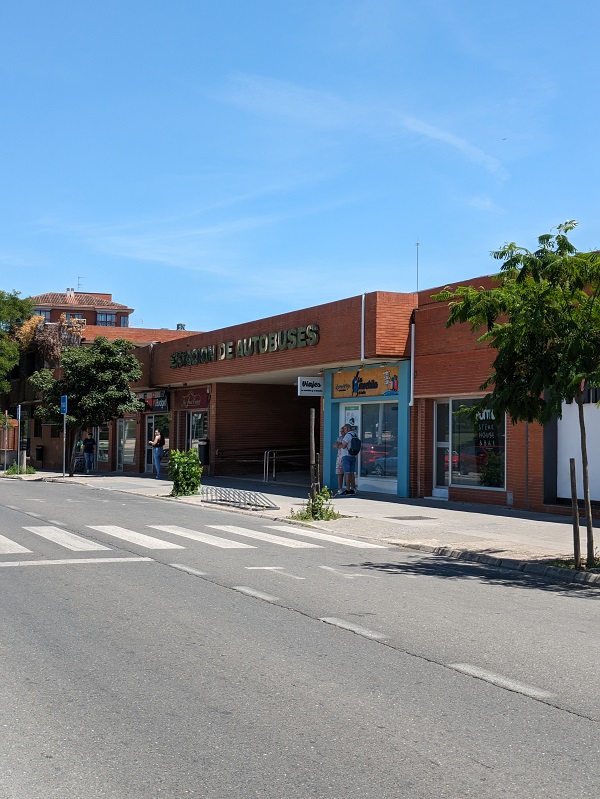
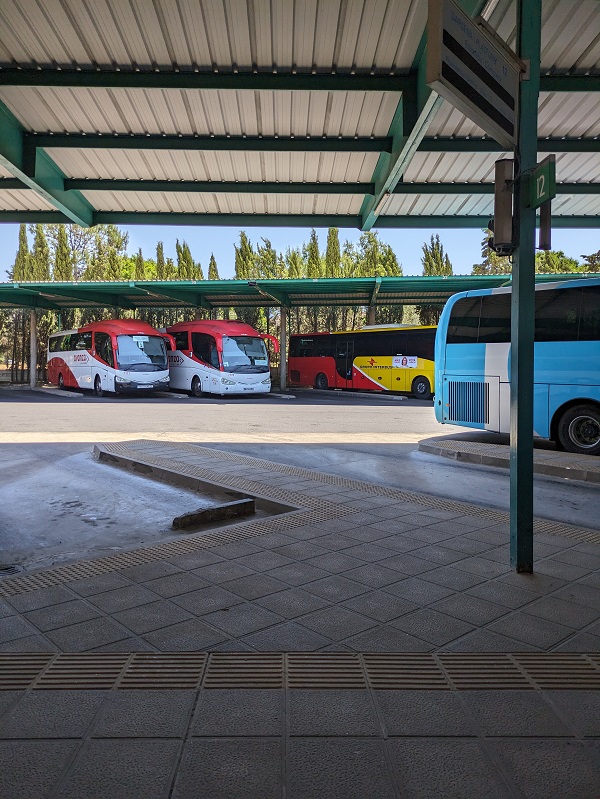
Travelling to Cáceres from Seville by coach may suit you in these cases:
You travel alone. A coach ticket will be cheaper than hiring a car on your own.
You don’t drive. Coaches are more frequent, more reliable and faster than trains.
Recommended read: A guide to travelling Extremadura by coach
Getting to Cáceres from Seville by train
Trains from Seville to Mérida depart from Estación de Tren Sevilla-Santa Justa. The train journey duration varies between 4h 10min (Media Distancia Service) and 4h 24min (Regional Exprés service).
Cáceres Train Station is located in Avenida Juan Pablo II, about thirty minutes away on foot from the main square (Plaza Mayor). Local bus stops are six minutes away on foot (Avenida de Alemania 45 stop for buses 1 and 4) or eight minutes away on foot (Avenida I. de Moctezuma stop for buses 2 or 3). Bear in mind that buses do not go as far as the historic city centre and you’ll still have to walk another ten minutes or so.
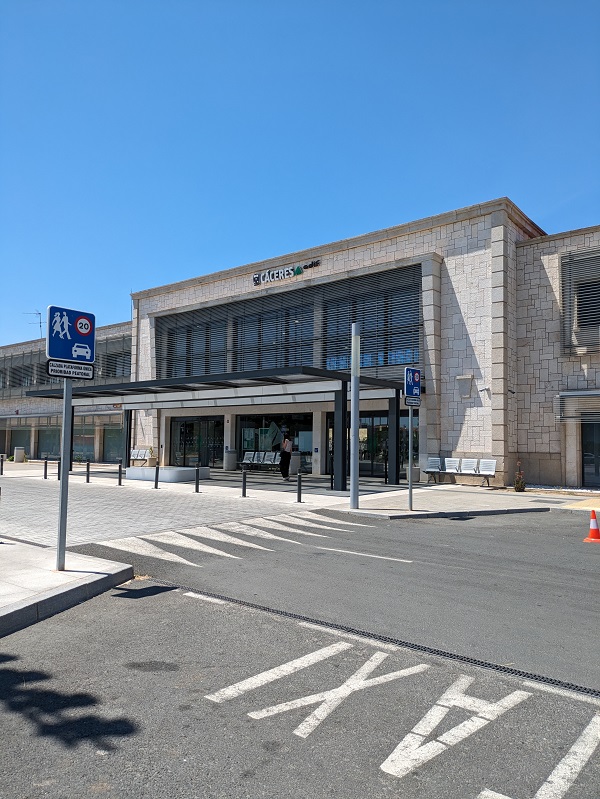
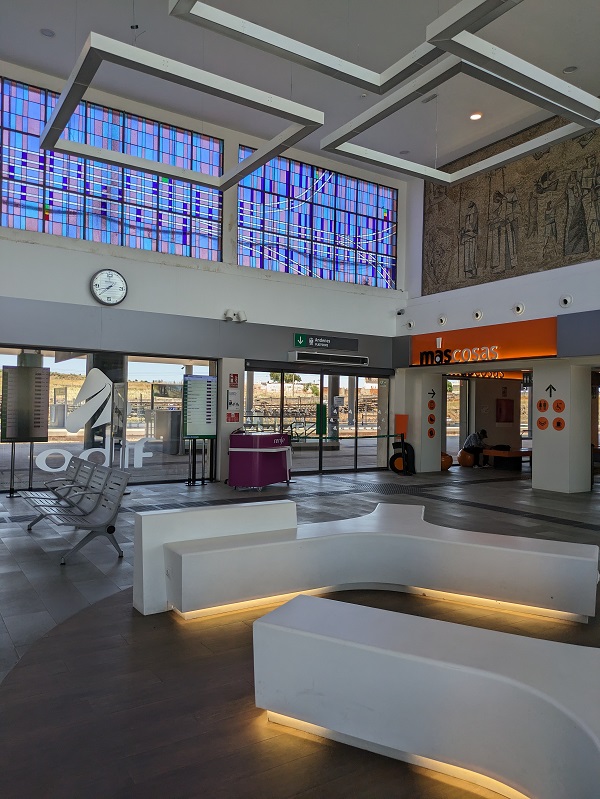
Bearing in mind the car, coach and train journey durations, it’s not unfair to say that travelling from Seville to Cáceres by train is a last-resort option. However, you may have to travel by train if you travel alone, you don’t drive, and there are no coach services available (highly unlikely). Or you may choose the train by personal preference, despite its disadvantages.
Read the Cáceres travel guide to know what to see and do in the city.
Other ways to get to Cáceres:
This content is protected by copyright and belongs exclusively to Irene Corchado Resmella. To know exactly what this means, read the 'Copyright' section in the Website terms of use.

Irene Corchado Resmella
Hi! I’m Irene (/ee-REH-neh/). Long since settled in the UK, I explore my Spanish home region of Extremadura with an inquisitive mind, a sharp eye, and the duality that comes with being both a local and a visitor. Then I write about it here to help you discover this beautiful yet overlooked part of Spain. If you have any questions after reading this article, submit a comment below! Read more about me.
